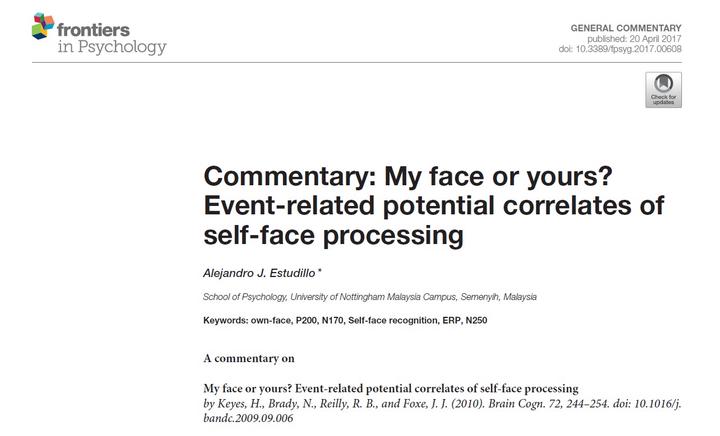
Abstract
The own face is our most distinctive physical feature and the paramount representation of our own identity. In contrast to other pieces of self-related information, such as the own name, the own face is not shared with other people, and it is more strongly tied to self-awareness (e.g., Keenan et al., 2005). This makes the own face a unique piece of our physical identity and, therefore, the emblem of the self (McNeill, 1998). Behavioral, neurophysiological, and neuroimaging research have tried to unravel different aspects about the relevance of the own face (e.g., Tong and Nakayama, 1999; Brédart and Devue, 2006; Estudillo and Bindemann, 2016, 2017) and its different neural markers (Devue and Brédart, 2011).
Type
Publication
Frontiers in Psychology, 8(608)